I met my birding guardian angel in 2023 when I saw her guiding a walk through my neighborhood, with three birders in tow. (Birders are easy to identify: binoculars equipped, necks craned, slow strides, tilted heads, full hearts.)
Thrilled to spot them—I had not yet joined any local birding community—I jogged over. The leader of the group, Anne, a small but sturdy retired NYCPS teacher, kindly introduced herself to me. I told her I recognized her name from the sparse eBird checklists in my neighborhood, which I think delighted her.
eBird checklist (n.) - eBird is the wonderful free app created by the Cornell Lab of Ornithology. Birders use it to submit checklists of the birds they saw during an outing.
Then (I don’t know why I did this) I asked if she was married to Ron, the other name I saw most frequently on nearby eBird checklists. Of course, they were not married. But, of course, they did know each other, as birders tend to do. She took down my name and email.
Anne not only cultivates but also sustains our small birding community by sending daily email blasts to over 40 local birders and nature lovers. Each update includes photos and a detailed checklist of the species observed—most of which come from Anne and Ron, who bird the same blocks and hotspots every day. I always read her reports in full. They’re grounding. I also read them for her excellent one-liners; one of my favorites: “If mallards were rare, we would be extra happy to see them.”
Since our first meeting, we stop and chat whenever we see each other. When I spot an uncommon or exciting species in our neighborhood, I email her. When I have a birding question, Anne is happy to answer. Recently, she lent me her backup scope to better enjoy winter birding. She’s called me “an excellent spotter” on multiple occasions, and I am being serious when I say this is the greatest compliment I’ve received in recent memory.
scope (n.) – a telescope built for birding, or other wildlife/natural observation, with more powerful magnification than binoculars. Generally mounted on a tripod. (Also called a “spotting scope.”)
And when Anne invited me to join her to bird Jamaica Bay, I felt like I had made it.

We met up early one Saturday morning at the beginning of March, and she drove us through Queens, onto Cross Bay Boulevard. In the car, we talked about Anne’s childhood in Brooklyn—where she and her sister would get into an acceptable amount of trouble—and we commiserated about perpetually late friends. (“Honestly, I think they have emotional issues,” Anne shared.)
We parked at the visitor’s center, grabbed our gear, including both of Anne’s scopes, and made our way to East Pond.
Managing binoculars effectively takes practice. Scopes require their own particular set of skills that I haven’t yet acquired.
Because of that, I missed a potential lifer at East Pond—an American wigeon. Anne had it in her scope and called it out. I couldn’t spot it in mine. She beckoned me to her scope, and I saw something in her view, but I wasn’t sure what. Other species were on the water in the same area, and I’m not very practiced at the local winter waterfowl.
lifer (n.) – a first-time sighting (or hearing, if you’re more into that) of a particular species. A new entry on the life list
I’m strict about identifying, lifers particularly. Unless I am 99.9% confident (Should we ever spit in the face of doubt?) about an ID, I won’t count that species. Did I see the wigeon? Probably. Anne was sure I had, and I trust her. But could I confidently identify it in the scope’s view? No. So it doesn’t count.
Throughout the day, Anne would count the wigeon in my checklist. I would push back, and even though she was certain I had seen it, she understood. Anne was just so excited for me to have a lifer that day.
On our way back from East Pond, we ran into Tom, a friend of Anne’s. He asked if we had seen the reports of the canvasback, which we hadn’t. Anne, knowing that would be a lifer for me, told me I should go back with Tom while she waited at the visitor’s center. Many birders like to do their thing alone. For many, that’s why they bird. But Tom, a very kind recent retiree, was happy to have me along.
As soon as Tom set up his scope at East Pond, he called out, “Got the canvasback.” Again, I couldn’t find it in my scope. When I told him that would be a lifer for me, he called me over and helped me locate it again in his scope. I was, frankly, pumped.
Back at the parking lot, Anne was elated at my lifer news. At Tom’s request, I messaged him on Discord so we could meet up and bird together in the spring. (This is me dropping a hint that my next post will be about birding Breezy Point with Tom.)
After Tom bid us goodbye, Anne introduced me to more of Jamaica Bay. We walked down a tranquil sandy path to reach West Pond. On the way, we saw hundreds of snow geese, some flying overhead, others huddled together by the shore. Only the week before, I had gone to Central Park just to see a single snow goose amidst a flock of hundreds of Canada geese. Those are the woes, or joys, of birding, though.
At West Pond, I saw two more lifers: a northern pintail and a greater scaup.
With each one, Anne’s enthusiasm radiated off her. She literally jumped for joy when I spotted the trio of pintails. With a life list in the 600s, Anne rarely gets lifers in NYC. That day, my excitement was hers.
As we circled West Pond, we spotted a flurry of yellow-rumped warblers, a northern flicker, and I spotted my FOY American oystercatcher.
FOY (adv. / n.) – “first of year”; the first time you spot a species in a calendar year
Anne suggested we double back to East Pond (I think she really wanted me to see that wigeon), and I was very game.
“Wow, you’re really into this,” she said. “Usually, my friends have to pull me away.”
Birding with an experienced naturalist provides a superior education to scouring blogs and field guides and eBird for birding tips. Plus, I enjoyed spending time with Anne.
There was no wigeon at East Pond the second time around, and that’s all right. I find that birding is as much about anticipation as it is about the rush of a lifer, spotting a rare species, or any time I catch a glimpse of a beloved species. (The avatar for this blog is the ruby-crowned kinglet, perhaps my favorite bird.)
Without mentors like Anne, I’d be frustrated with birding’s difficulties much more often—staring blankly at a field guide and posting my crappy photos to r/whatsthisbird with reckless abandon. Instead, I get to experience the joy of learning with someone knowledgeable, encouraging, and kind. I count myself lucky that Anne has taken me under her wing.
Lifers:
Canvasback (1, at East Pond)
Northern pintail (3, at West Pond)
Greater scaup (2, at West Pond)
Photos courtesy of Wikimedia Commons.

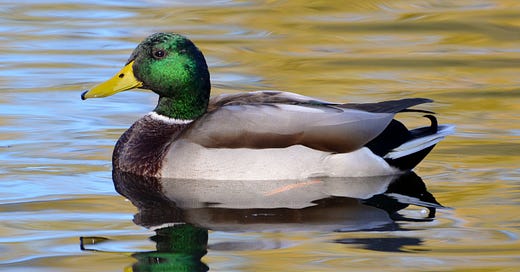



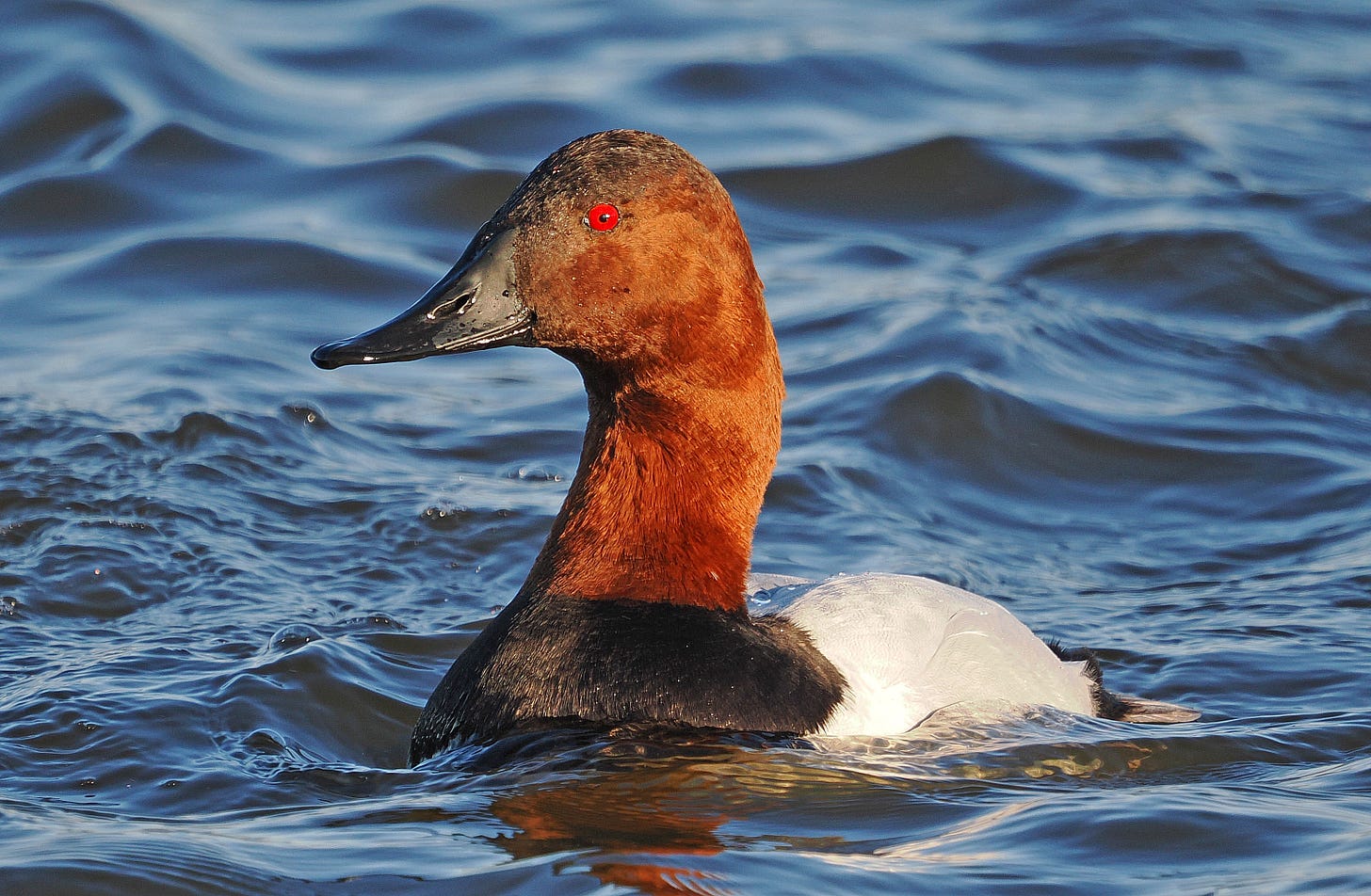
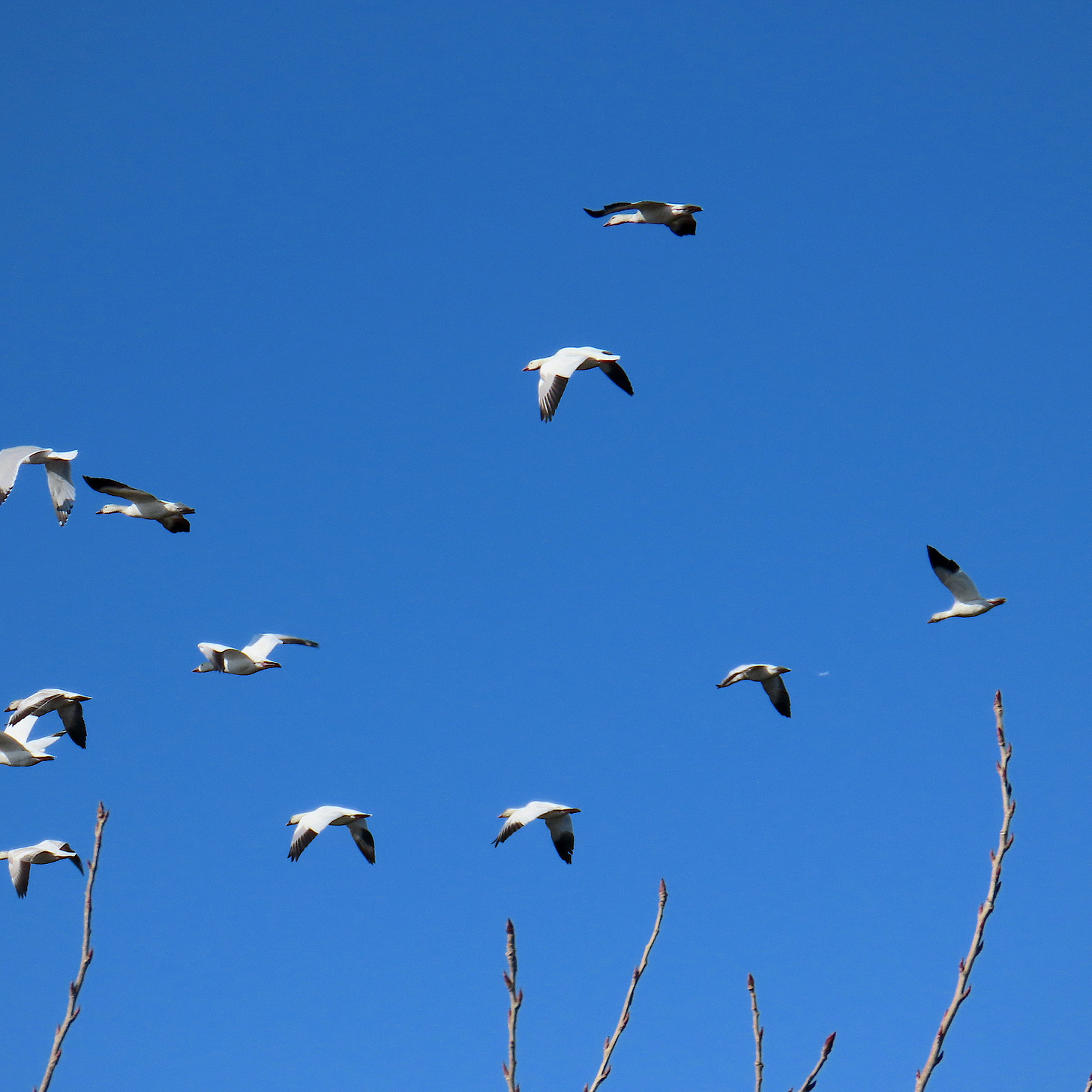
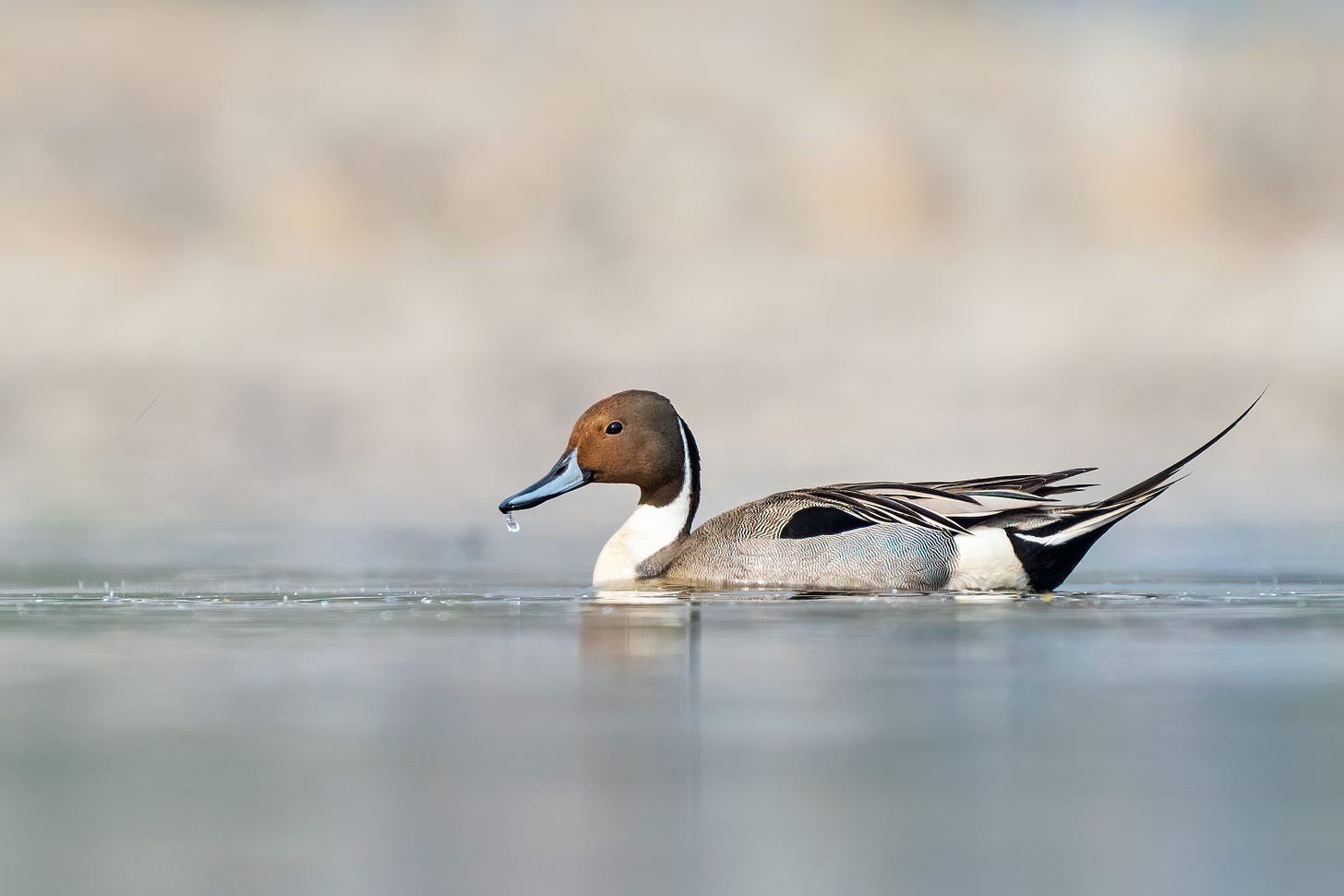
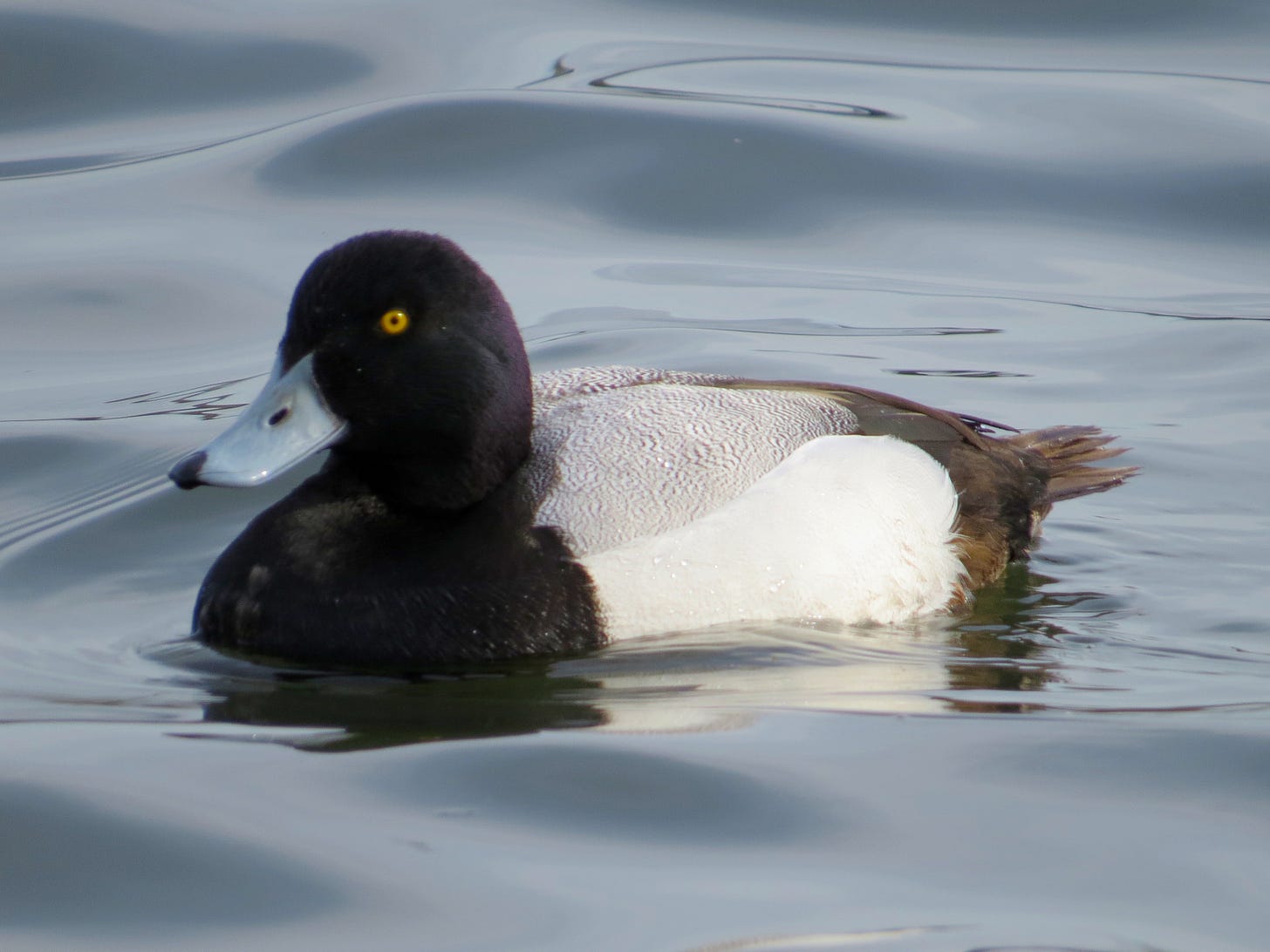
This is such a calming read